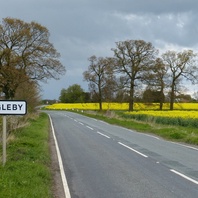
Viking Names
Ingleby
Ingleby, historically in the West Riding of Yorkshire, takes its name from the Old English ethnonym Engle ‘the Angles, later the English’ and Old Norse by ‘a farmstead, a village’. There is also an Ingleby in Derbyshire, close to the Viking winter camp at Repton, and the site of a unique Viking Age cremation cemetery. The exact implications of such a name are not yet fully understood and are the subject of ongoing work by Dr Jayne Carroll of the Institute for Name-Studies, University of Nottingham. Ingleby in Lincolnshire is now a joint parish with Saxilby.
Read More
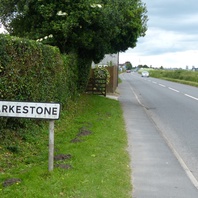
Viking Names
Swarkestone
Swarkestone, in the Repton and Gresley Hundred of Derbyshire, is derived from a Scandinavian male personal name which appears in Old Danish as Swerkir, in Old West Norse as Sorkir and in Old Swedish as Swerker. This is combined with Old English tun ‘farm, settlement’ and it is thus a hybrid name, as so many in the Trent Valley.
Read More

Viking Names
Snibston
Snibston, in the West Goscote Hundred of Leicestershire, is a hybrid place-name formed from the Old Norse male personal name Snípr, a byname related to Norwegian snipa ‘a miser, an unsociable person’ and Old English tun ‘farm, settlement’. Snibston became a joint parish with Ravenstone in 1884 when Ravenstone moved from Derbyshire to Leicestershire.
Read More
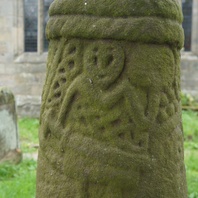
Blog Post
Some Derbyshire Warriors
Of the East Midlands counties, Derbyshire is perhaps the least well known for its Viking Age remains, apart of course from the camp at Repton. There is a scatter of place-names that suggest that members of that camp settled down in the region. And the recent publication of the Derbyshire volume of the Corpus of Anglo-Saxon Stone Sculpture provides further clues. Cross-shaft from Brailsford, Derbyshire. Photo by Judith Jesch At Brailsford, not far from Derby, a moss-covered cross-shaft stands outside the church, depicting a figure with a small shield and a rather large sword. The Corpus volume describes this as a ‘battle-ready warrior’ (p. 91) and suggests (p. 157) that this unusual warrior image is a memorial stone or marker of a member of the Anglo-Scandinavian warrior elite. The stone is loosely dated to the tenth century, so it could represent someone who had been at Repton, or more likely one of his descendants. Another warrior figure can be found on a cross-shaft at Norbury, to the west of Brailsford. This figure has a sword and what looks like a horn. The Corpus volume suggests (p. 194) that this is similarly a memorial to a member of the warrior elite. But it also raises the intriguing possibility that the figure represents the Norse god Heimdallr, whose horn announces the beginning of Ragnarök. While a bit speculative, this is not impossible since Heimdallr is fairly certainly represented on the Gosforth cross in Cumbria and possibly on the Jurby cross in the Isle of Man. Part of cross-shaft from Bakewell. Photo by Roderick Dale Though there seem to be only two warrior-figures from Derbyshire, there are plenty of other Anglo-Scandinavian sculptures. There are (or were) two hogbacks: one from Repton which is lost but known from drawings, and one from Derby which can be seen in the museum there. There are a number of crosses and cross-shafts with various types of Viking Age ornament. Particularly interesting is part of a cross-shaft from Bakewell with Borre-style ring-chain (p. 122). This type of ornament is associated with the Irish Sea region and demonstrates the links the East Midlands had with the rest of the Viking world. Who all these memorials represent is a fascinating question we would all love to know the answer to. Most intriguing of all is a rune-inscribed fragment, also from Bakewell. The runes are very clearly Anglo-Saxon, yet as interpreted by David Parsons (p. 142) they most likely represent the Scandinavian male personal name Helgi (or its female equivalent Helga).
Read More

Viking Names
Bretby
The first element of Bretby, in the Repton and Gresley Hundred of Derbyshire, comes from either the Old Norse ethnonym Bretar ‘Britons’ or its Old English cognate, Brettas. The second element of the place-name is Old Norse bý ‘a farmstead, a village’. Traditionally, the place-name has been interpreted as referring to Britons who accompanied the Scandinavians in their settlements. However, the exact implications of such a name are not yet fully understood and are the subject of ongoing work by Dr Jayne Carroll of the Institute for Name-Studies, University of Nottingham.
Read More
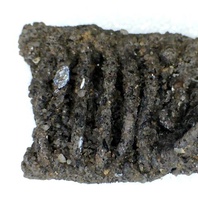
Viking Objects
Silver Wire Embroidery (1988/225-16)
This silver wire was found in Mound 11 at Heath Wood, Ingleby, Derbyshire. This burial mound contained fragments of the remains of an adult human together with the cremated remains of animals, including a small dog, a horse and sheep. The burial was accompanied by this silver wire, an iron spade shoe, some small iron nails and some corroded metalwork. The silver wire was found in two parts with traces of carbonised fibres attached. This suggests that it was probably attached to a piece of cloth. Silver and gold embroidery are known from a number of Viking Age graves, including from nearby Repton, Derbyshire, as well as further afield, e.g. Birka, Sweden. At Birka, wire embroidery was found on caps and headbands, although there is no reason to think that it was only used on headgear at all times.
Read More
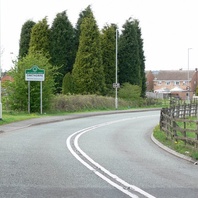
Viking Names
Oakthorpe
Oakthorpe, historically belonging to the Repton and Gresley Hundred of Derbyshire, probably comes from the Old Norse male personal name Áki (genitive singular Áka) and the Old Norse element þorp ‘outlying farm, settlement’. Alternatively the first element of the place-name could be Old English ac ‘oak tree’; however, it is more likely that the Old Norse personal name became confused with this Old English appellative. Oakthorpe is a joint parish with Donisthorpe and they were both transferred to Leicestershire in 1897.
Read More

Item
Croxall
Croxall, historically in the Repton and Gresley Hundred of Derbyshire, probably comes from the Old English male personal name Croc derived from the Old Norse personal name Krókr and the Old English halh ‘nook, corner of land’. However, it is also possible that the first element is from the Old English topographical element croc ‘crook’, perhaps ‘nook’. The parish was transferred to Staffordshire in 1894.
Read More

Viking Names
Krok
Krókr, an original byname meaning ‘crook-backed’, related to Old Norse krókr ‘hook’, or possibly ‘crooked-dealer’. It is a rare and late personal name in West Scandinavia, but is more common as a byname early. The personal name is also recorded in Sweden and Denmark and is found in a Danish runic inscription as well as in several Danish place-names. Additionally, the name is probably found in Normandy. The name is common throughout the Danelaw and found in many place-names such as South Croxton and Croxton Kerrial in Leicestershire and Croxall, Staffordshire (formerly of the Repton and Gresley Hundred of Derbyshire).
Read More

Blog Post
The Rich and the Brave: Burials, Weapons, and Warriors
The common association of highly furnished weapon burials containing a male skeleton with warriors is still a highly debated topic and one that has a profound impact on how we view Vikings. Much scholarly ink has been spilled discussing theories surrounding motivations behind grave good deposition and the relation between weapon burials and the deceased in Scandinavia, Britain, and with varying degrees of success. Choosing which theory to apply to a situation is complicated by a variety of factors not least of which is that historical, geographical and chronological context changes how one interprets a ritual depending on the time and place it was practised. Furthermore, there is usually no knowledge of who selected the objects to be deposited and thus no concrete idea why they did so. According to Heinrich Härke, textual sources are the best means with which to attempt to determine motivations but are rarely present for the space and time under review (Härke 2014, 53–54). A Viking sword found at Repton, Derbyshire. (c) Derby Museums and Art Gallery While weapons are highly-visible in archaeological contexts, their use in burials only represents a small segment of the population within a social context that had many different high-status burial practices (Harrison 2015, 314). Secondly, poorly furnished burials are understudied with no definitive comments made about them (Harrison 2015, 314–15; 2008, 166–90). In addition, the relationship between perceived and actual status and the fact that no artefact has a fixed value or meaning but rather its meaning is imposed both complicate the issue further (Harrison 2015, 304). The perceived importance of an individual is heavily influenced by local burial tradition. For example, at Kilmainham/Islandbridge a large number of weapon burials with high-quality swords were discovered which reflects the importance of Dublin between the ninth and tenth centuries while the number of graves containing these high-quality swords may reflect the role competitive display played within Dublin society (Harrison 2015, 304; Harrison and Ó Floinn 2014, 75–93). However, the situation in the former Danelaw is very much the opposite with a general paucity of weapon burials east of the Pennines (Harrison 2015, 304; Graham-Campbell 1980, 379; Richards 2000, 142). Harrison argues that this may be a reflection of the higher value placed on weapons in the Danelaw than in Dublin or elsewhere along the western seaboard (Harrison 2015, 304). One last point to consider when examining burials and grave goods is that the choice of grave goods can reflect how the deceased or those burying them wished their identity to be portrayed can equally affect weapon burials. Moreover, grave goods can underline the hybridity of an individual’s identity. For example, the shield bosses of Kilmainham/Islandbridge combine elements of both Irish small bosses and Anglo-Saxon conical bosses to create a fusion shield boss type only found near Dublin reflecting the distinct local identity of its elites (Harrison 2015, 309; Harrison and Ó Floinn 2014, 122–25; Bøe 1940, 33, 38). So how can weapons in burials be used to potentially identify whether or not individuals were involved in military activities? In simple terms, there is no definitive way of correlating the two but by studying the graves within their historical and geographical context, it may be possible to make a case. One strong indicator that an individual may have been involved in military activities are any signs of trauma on the skeletons, such as those found at Repton, alongside the inclusion of weapons as grave-goods. References: Bøe, Johs. 1940. Viking Antiquities in Great Britain and Ireland, Part 3: Norse Antiquities in Ireland. Edited by Haakon Shetelig. Oslo: H. Aschehoug. Graham-Campbell, James. 1980. ‘The Scandinavian Viking-Age Burials of England: Some Problems of Interpretation’. In Anglo-Saxon Cemeteries, edited by Phillip Rahtz, Lorna Watts, and Tania Dickinson, 379–82. British Archaeological Reports British Series 82. Oxford: Archaeopress. Härke, Heinrich. 2014. ‘Grave Goods in Early Medieval Burials: Messages and Meanings’. Morality 19 (1): 41–60. Harrison, Stephen. 2008. ‘Furnished Insular Scandinavian Burial: Artefacts & Landscape in the Early Viking Age’. Dublin: Trinity College Dublin. Harrison, Stephen. 2015. ‘“Warrior Graves”? The Weapon Burial Rite in Viking Age Britain and Ireland’. In Maritime Societies of the Viking and Medieval World, edited by James Barrett and Sarah Gibbon, 299–319. Society for Medieval Archaeology. Leeds: Maney Publishing. Harrison, Stephen, and Raghnall Ó Floinn. 2014. Viking Graves and Grave-Goods in Ireland. Dublin: National Museum of Ireland. Richards, Julian. 2000. Viking Age England. Stroud: Tempus.
Read More
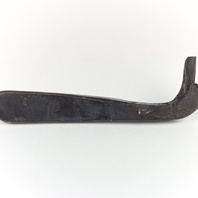
Blog Post
Unlocking the Meaning of Keys in the Viking Age
A reproduction iron key based on one from Repton, Derbyshire Most keys that have been found are from graves, and were deliberately buried with individuals. The fact that only some people were buried with keys shows that keys had both practical and symbolic functions in the Viking Age. The practical function of keys was to lock locks, as is to be expected. They secured items against access or theft, and their presence indicates that the owner of the key actually had valuables worth locking up. Viking Age keys, padlocks and locks have all been found by archaeologists. The locks and padlocks probably belonged to chests and were used to secure a person’s most important belongings. Chests were used as storage at home and as travelling luggage by sailors going abroad. The chest provided a secure place to keep personal belongings, and was also used as a seat for the rowers. Keys could be decorated, like one from Gjerdal in Norway, which had been decorated with stylized animal heads and geometric ornamentation that dates it to the Viking Age. Keys are found as a part of burial paraphernalia in Scandinavia from the Migration Period through the Viking Age, and were usually made of iron or copper alloy. Although often viewed as primarily grave goods, in reality they have also been found on settlement sites throughout Scandinavia, and as single finds. Received wisdom states that they are most commonly found in women’s graves, and occasionally in men’s graves. However, they are not a common find overall. Only a small number of keys have been found compared to the large number of excavations undertaken. Most importantly, this applies to graves, where Berg (2015, 130) notes that of 6000-8000 graves excavated in south-east Norway only 117 contained keys. She also shows that keys are not a predominantly female accessory, as is usually stated. The Museum of Cultural History in Oslo notes that approximately 75 copper alloy keys and 170 iron keys of Viking Age date have been found in south-east Norway alone. The copper alloy keys are all different, showing that they were not mass-produced, but rather cast individually. Moulds for keys and smiths’ tools have been found during the excavations at Kaupang in Norway, providing the key to understanding how keys were made. Keys had symbolic value which has most often been taken to indicate the social function of the bearer. As items that provided access and closed it off, they indicated that the bearer had these powers too. This symbolic value has been most associated with women, largely because medieval law codes such as Borgartingslova (the Borgarthing Law) which dates from the twelfth or thirteenth century, identify keys ‘as a signifier for the key-bearer, sometimes described as a woman or housewife’ (Berg. 2015, 127). In the Eddic poem Þrymskviða Thor must dress up as Freyja. Part of his disguise is a set of keys hanging from his belt leading to the suggestion that Freyja may have been particularly associated with keys as a symbol of her domain. This image of powerful women controlling access to the house has led to an enduring image of the Viking Age matriarch wearing keys on her belt or hanging from a brooch to show that she was the gatekeeper in the household. However, this raises the question of what keys are doing in men’s graves, as in the case of Grave 541 at Repton, Derbyshire. Norse laws from the medieval period demonstrate that keys symbolised control over the household, a female area of power, and reinforce this idea. Given that keys symbolized power, ownership and control of access, it is likely that keys in men’s graves are indicators of their status as owners too. They may not have carried them in life, but keys as grave goods symbolise their power after death. Beyond simple interpretations of keys indicating ownership, Pantmann (2014, 52) suggests that keys had a cultic role in pagan Scandinavia. The concept of the ‘kloge kone’ or ‘wise woman’ may have been symbolised by keys, because keys have a universal symbolic value indicating knowledge, power, and insight. In this role, they are associated with Freyja and thus childbirth, the afterlife (Freyja receives half of those slain in battle into her hall Sessrúmnir), and female leadership, a role that is closely associated with the role of matriarch of a household. Berg (2015, 127) notes that the connection between keys and childbirth is that the keys symbolically unlock the womb or loins to ensure a successful birth. Keys are also associated with Christianity. The triquetra found on some keys may be associated with the Holy Trinity, but may also be a pre-Christian symbol of fertility and motherhood (Berg, 128). The focus on keys as symbols of women’s power is not supported by the archaeological evidence, so it is likely that keys are not symbolic of the housewife alone. However, it is noteworthy that decorated bronze keys are almost exclusively linked to women while iron keys are not (Aannestad. 2004, 80). The fact that keys were buried with certain people is a clear indicator of symbolic significance; the dead are buried with items that are important to them or to those that buried them. Those items gain significance by being chosen to be included as grave goods. Thus keys had symbolic significance, and it may have been related to power and access. This is supported by their rarity as finds, indicating that they belonged to the few, not to the many, and it is likely that those few were the ones who had wealth or treasures that needed locking away. Keys are symbols of wealth and access to power, and perhaps symbolise the ability to affect one’s environment through ritual action (Berg. 2015, 132), but their use as symbols is nuanced and may represent different things at different points in the Viking Age, and in different places within the Viking diaspora. As a result, unlocking the meaning of keys in the Viking Age is not simple. Further Reading: Aannestad, Hanne Lovise. 2004. “En nøkkel til kunnskap – Om kvinneroller i vikingtid”. Viking. Berg, H. L. 2015. “’Truth’ and reproduction of knowledge. Critical thoughts on the interpretation and understanding of Iron-Age Keys”. In Marianne Hem Eriksen, Unn Pedersen, Bernt Rundberget, Irmelin Axelsen and Heidi Lund Berg (eds). Viking Worlds: Things, spaces and movement. Oxbow Books: Oxford. Pantmann, Pernille. 2014. “Nøglekvinderne” in Kvinner i vikingtid. Ed. by Nancy Coleman and Nanna Løkka. Scandinavian Academic Press: Oslo. Pp 39-56.
